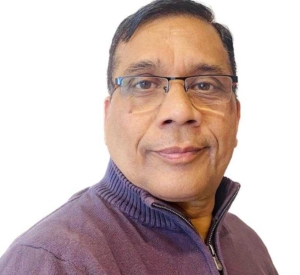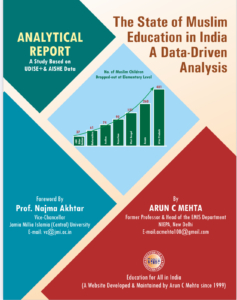Analysis of Pupil-Teacher Ratios in India by Level of Education
A State-wise Examination based on UDISE+ 2024-25 Data
Introduction
India’s pursuit of universal school education by 2030, as envisioned in the National Education Policy (NEP) 2020, hinges on ensuring equitable access to quality education. A critical metric in this endeavour is the pupil-teacher ratio (PTR), which reflects the capacity of teachers to provide personalized attention and foster effective learning. Despite progress under initiatives like Samagra Shiksha, challenges such as teacher shortages, uneven deployment, and the persistence of small schools or those with zero enrollment yet staffed teachers persist. This updated analysis leverages the latest UDISE+ 2024-25 data, released in August 2025, to compare trends with 2021-22 figures, identify states needing attention, and assess implications for educational quality and the 2030 goal. It also addresses emerging issues like small schools, teacher non-academic duties, and the need for school-level planning, aligning with insights from Education for All in India.
State-specific PTR at Different Levels of Education: UDISEPlus 2024-25 [DoSE&L]
Significance of PTR at School Level in India
An optimal PTR is vital for meaningful teaching-learning processes. It allows teachers to address individual student needs, enhance engagement through interactive sessions, and manage classrooms effectively. This is especially crucial for students with special requirements, ensuring they receive tailored support. A lower PTR also boosts teacher effectiveness by freeing time for lesson planning and feedback, strengthening student-teacher relationships, and creating a positive school environment. However, achieving this requires complementary reforms in training, infrastructure, and curriculum to ensure holistic education.
Historical Perspective of PTR in India
Historically, India’s PTR was high due to limited resources and infrastructure, particularly in the pre-independence era, leading to overcrowded classrooms. Post-1947, efforts to expand access reduced ratios, though rural disparities lingered. The Right to Education (RTE) Act of 2009 set benchmarks (30:1 primary, 35:1 upper primary/secondary), while subsequent reforms under Sarva Shiksha Abhiyan and NEP 2020 pushed for 20:1 across levels by 2025. UDISE+ data shows progress, but regional imbalances and demographic shifts continue to challenge uniformity.
PTR Norms in Samagra Shiksha
Samagra Shiksha, launched in 2018, aims for inclusive education from pre-school to Class 12, advocating optimal PTRs without rigid mandates. It recommends 20:1 for primary, 30:1 for upper primary and secondary levels, with a 2025 target of 20:1 across all stages through hiring and redeployment. States adapt these based on local needs, with funding supporting teacher recruitment and training to bridge gaps in underserved areas.
Pupil-Teacher Ratio by Level of Education: Comparative Analysis (2021-22 vs. 2024-25)
The UDISE+ 2024-25 data, with over 10.1 million teachers (up 6.7% from 9.5 million in 2021-22), reflects improved PTRs, aligning with NEP goals. Female teachers now constitute 54.2% of the workforce, enhancing diversity.
| Level of Education | PTR 2021-22 | PTR 2024-25 | Change |
|---|---|---|---|
| Primary (Classes 1-5) | 26 | 20 | -6 |
| Upper Primary (Classes 6-8) | 19 | 17 | -2 |
| Secondary (Classes 9-10) | 17 | 15 | -2 |
| Higher Secondary (Classes 11-12) | 27 | 23 | -4 |
Analysis: The most significant drop is at the primary level (-6), supporting early education focus. Upper primary and secondary improvements (-2 each) indicate better resource allocation, while higher secondary (-4) remains strained due to specialization needs. Rural and government schools often exceed these averages due to deployment issues, necessitating targeted interventions for the 2030 universal education goal.
State/UT-wise PTR for 2024-25
| India/State/UT | Primary | Upper Primary | Secondary | Higher Secondary |
|---|---|---|---|---|
| India | 20 | 17 | 15 | 23 |
| Andaman & Nicobar Islands | 9 | 8 | 6 | 10 |
| Andhra Pradesh | 21 | 15 | 10 | 30 |
| Arunachal Pradesh | 9 | 7 | 9 | 14 |
| Assam | 19 | 13 | 12 | 19 |
| Bihar | 26 | 19 | 26 | 27 |
| Chandigarh | 22 | 15 | 10 | 23 |
| Chhattisgarh | 18 | 15 | 14 | 12 |
| Dadra & Nagar Haveli and Daman & Diu | 28 | 26 | 19 | 21 |
| Delhi | 29 | 28 | 17 | 20 |
| Goa | 23 | 14 | 8 | 16 |
| Gujarat | 24 | 24 | 27 | 25 |
| Haryana | 21 | 17 | 10 | 11 |
| Himachal Pradesh | 13 | 8 | 6 | 9 |
| Jammu & Kashmir | 12 | 9 | 12 | 22 |
| Jharkhand | 26 | 24 | 30 | 47 |
| Karnataka | 21 | 17 | 18 | 28 |
| Kerala | 22 | 18 | 13 | 20 |
| Ladakh | 5 | 3 | 5 | 8 |
| Lakshadweep | 17 | 15 | 8 | 8 |
| Madhya Pradesh | 16 | 14 | 14 | 15 |
| Maharashtra | 24 | 24 | 20 | 37 |
| Manipur | 13 | 9 | 9 | 14 |
| Meghalaya | 18 | 12 | 10 | 15 |
| Mizoram | 12 | 6 | 8 | 11 |
| Nagaland | 9 | 7 | 8 | 16 |
| Odisha | 16 | 15 | 16 | 37 |
| Puducherry | 14 | 12 | 9 | 15 |
| Punjab | 20 | 15 | 9 | 16 |
| Rajasthan | 18 | 12 | 11 | 15 |
| Sikkim | 6 | 6 | 5 | 7 |
| Tamil Nadu | 20 | 18 | 12 | 21 |
| Telangana | 18 | 12 | 9 | 24 |
| Tripura | 16 | 15 | 11 | 14 |
| Uttarakhand | 15 | 13 | 10 | 14 |
| West Bengal | 21 | 27 | 18 | 21 |
| Uttar Pradesh | 20 | 22 | 22 | 35 |
Source: UDISE+ 2024-25
UDISE+ PTR 2024-25: All India Level
Nationally, PTRs improved to 20:17:15:23, reflecting a 6.7% teacher increase since 2021-22. Primary gains (-6) align with early education priorities, while higher secondary (23:1) lags due to subject demands, highlighting deployment inefficiencies.
UDISE+ PTR 2024-25: State/UT Level
States Needing Attention: Bihar (26:19:26:27), Jharkhand (26:24:30:47), Uttar Pradesh (20:22:22:35), Dadra & Nagar Haveli and Daman & Diu (28:26:19:21), Delhi (29:28:17:20), Gujarat (24:24:27:25), Maharashtra (24:24:20:37), and Odisha (16:15:16:37) exceed norms, often due to rural shortages and overburdened staff.
States with Comfortable PTRs: Himachal Pradesh (13:8:6:9), Jammu & Kashmir (12:9:12:22), Manipur (13:9:9:14), Mizoram (12:6:8:11), Nagaland (9:7:8:16), and UTs like Ladakh (5:3:5:8) maintain low ratios, enabling personalized teaching.
Impact of Adverse PTR on Quality of Education
High PTRs, exceeding 30:1 in states like Jharkhand (47:1 higher secondary), strain teachers, reducing engagement and increasing dropout risks – up to 20-30% in high-PTR areas per ASER 2024. This hampers foundational skills, with math and reading proficiency dropping significantly. Overburdened educators face burnout (25% absenteeism nationally), diluting instruction quality. For 2030 universal education, such disparities widen inequities, undermining NEP’s equity focus.
Teacher Shortages, Deployment Issues, and Untrained/Unqualified Teachers
Despite 10.1 million teachers in 2024-25, a shortage of approximately 1 million persists, particularly at elementary and secondary levels, as noted on Education for All in India. This gap, linked to rural vacancies and subject needs, impacts quality – see Shortage of Teachers in India: Implications for Quality of Education (2024).
Deployment remains inefficient: 36% of government schools with under 50 students have 1-2 teachers (NITI Aayog, 2021), while urban-rural imbalances persist. Single-teacher schools dropped to 1.04 lakh in 2024-25, but multigrade teaching remains a challenge. UDISE+ 2024-25 shows 91.4% primary and 91.7% upper primary teachers trained, yet states like Meghalaya (72-80%) lag, with 25% holding only higher secondary qualifications. For details, see Analysis of Trained and Professionally Qualified Teachers in India: UDISE+ 2024-25 Data.
Small Schools and Schools with Zero Enrollment but Teachers
Small schools, with fewer than 50 students, numbered 2.1 lakh in 2024-25 per Education for All in India, straining resources and justifying high PTRs due to low pupil counts. Conversely, 1,200 schools reported zero enrollment yet retained teachers, reflecting misallocation. These issues, often in remote areas, hinder efficient teacher use and demand rationalization under Samagra Shiksha.
Single-Teacher Schools
With 1.04 lakh single-teacher schools in 2024-25 (down 6% from 2023-24), challenges like limited attention and multigrade teaching persist, especially in rural zones. Efforts via recruitment, tech integration, and Samagra funding aim to eliminate these, critical for 2030 equity goals.
Non-Academic Duties and PTR Management
Teachers often handle mid-day meals and administrative tasks, despite a 2001 Supreme Court ruling against non-academic roles. In 2024-25, this affected 30% of rural teachers, reducing teaching time by 15-20 hours monthly. Some schools rely solely on PTR to justify staff, masking inefficiencies. This diverts focus from academics, necessitating strict adherence to judicial directives.
Concluding Observations and Recommendations
The UDISE+ 2024-25 data showcases PTR improvements, with national ratios nearing Samagra Shiksha targets, yet critical issues emerge. A 1 million teacher shortage, uneven deployment, and high PTRs in states like Bihar and Jharkhand threaten quality, exacerbating dropout rates and skill gaps. Small schools (2.1 lakh) and those with zero enrollment (1,200) highlight resource misallocation, while non-academic duties – despite Supreme Court rulings—further strain teachers. The SSA framework’s emphasis on school development plans (SDPs) over district plans has been overlooked, weakening localized solutions. Untrained teachers (up to 25% unqualified in some states) and single-teacher schools (1.04 lakh) compound these challenges, risking NEP’s 2030 universal education goal.
Recommendations: Conduct thorough stock-taking exercises during annual work plan and budget formulation to identify schools with adverse PTRs, reviving SDPs as the foundation for district plans. Recruit the 1 million needed teachers, prioritize rural deployment, and enforce training mandates (aiming for 95% qualification by 2027). Eliminate non-academic duties per court orders and rationalize small/zero-enrollment schools. Collaborative efforts with communities and tech integration can bridge gaps, ensuring equitable, quality education.
Frequently Asked Questions (FAQs)
- 1: What is the pupil-teacher ratio (PTR), and why is it important in India’s education context?
PTR measures students per teacher; a lower ratio enhances attention and outcomes, vital for RTE and NEP goals. - 2: How has the pupil-teacher ratio in India evolved over the years?
From high pre-independence ratios, RTE 2009 set norms, with PTR dropping from 26:1 to 20:1 (primary) by 2024-25, though gaps remain. - 3: What does the Samagra Shiksha scheme specify for PTR norms?
It targets 20:1 primary, 30:1 upper primary/secondary, aiming for 20:1 by 2025 via hiring and deployment. - 4: What does the latest UDISE+ 2024-25 data reveal about PTR in India?
PTRs improved to 20:17:15:23, but states like Bihar (26+) need focus, while NE states excel. - 5: What are the consequences of single-teacher schools in India, and how are they being addressed?
They limit depth; recruitment, training, and tech under Samagra Shiksha reduced numbers to 1.04 lakh. - 6: What can be done to further improve PTR in India?
Hire 1 million teachers, optimize deployment, enhance training, and boost funding to 6% GDP. - 7: How can parents and communities contribute to improving education quality?
Advocate for resources, engage in school committees, and support training. - 8: Are there specific government programs for PTR improvement?
Yes, Samagra Shiksha and RTE set norms; NEP targets 20:1 by 2025. - 9: How can technology mitigate high PTR challenges?
Tools like DIKSHA enable hybrid learning, easing teacher loads. - 10: How do untrained teachers affect universal education goals?
They lower outcomes; 91% trained nationally, but gaps in states like Meghalaya demand upskilling.
For further insights, visit UDISE+ Portal or Education for All in India.
Source: UDISE+ 2024-25 and earlier years.


